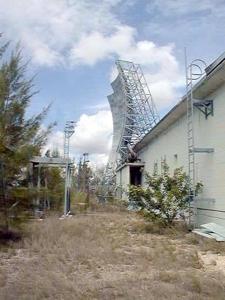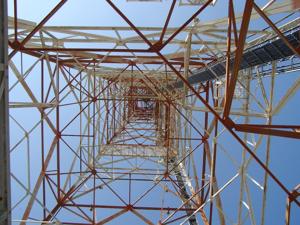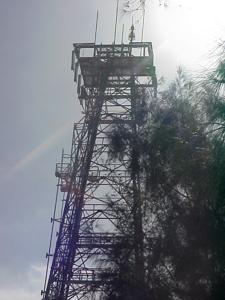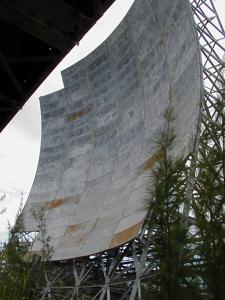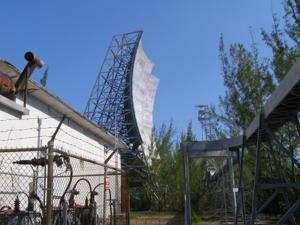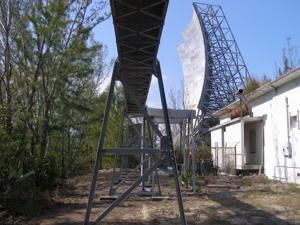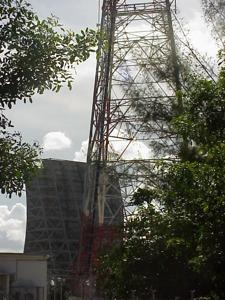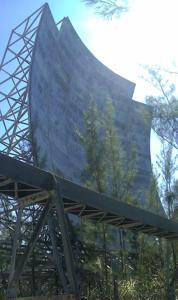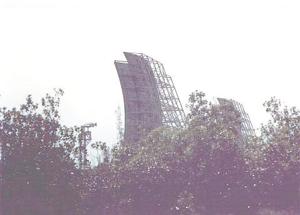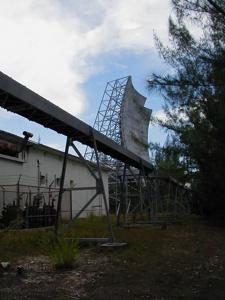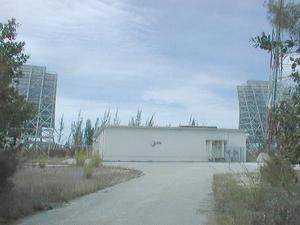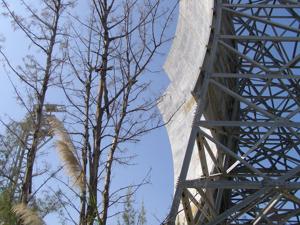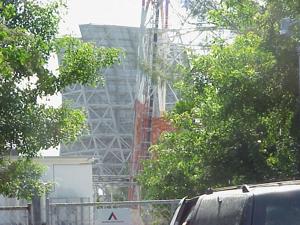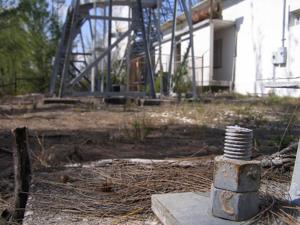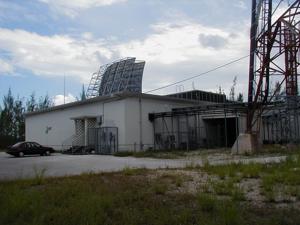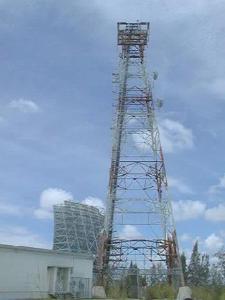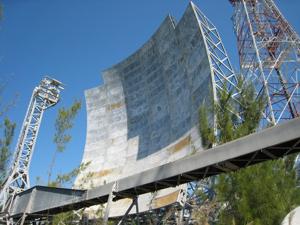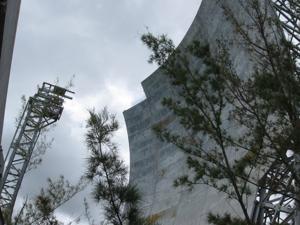SITE HISTORY Collapse/Expand
Troposcatter, TD-2, Submarine Cable
Florida City: I was surprised to see the scatter reflectors for Cuba still standing. The story had been they had been "destroyed by Hurricane Andrew." Perhaps the feedlines were damaged, or perhaps AT&T just decided it was time to let the whole thing die. Because, when Florida City was first aired to Cuba in 1959, nobody knew what the cellphone future would be, the Cuba link operated two 10 kw transmitters of very wide bandwidth (enough for 900 telephone channels or one video signal each) right smack in the middle of where cellphones later wound up. Until AT&T finally shut Florida City down, Southern Bell could not use a lot of its 900 mHz cellphone allocations in that area, especially in the path of those antennae. There's a whole set of stories about Castro's Cuba hanging off those links for a couple of decades, first being in the envious position of being an enemy nation that could dial the whole world through them. It's quite a tale about how once one is a "brother in the cloth" of the global public telephone network, one finds it's a great big "honor system," and then how, when Castro didn't pay for half a decade, AT&T had to politick its way into getting Washington to let them turn off the dial tone to Castro. I was in Miami that day, and the tensions ran high. Since Castro had no other really effective means to talk to the rest of the world, especially Moscow, except through that link, he kow-towed to the new, stiff terms Ma Bell dictated within a few hours, and we turned it back on. However, he never forgot, and 20 years later, when he had the international trading horsepower and when satellite technology permitted, he took a deal from Italcable to connect to the world via satellites run by Italcable from Cuba (including links to Canada for most of North America) and thumbed his nose at Ma Bell, leaving her with her ancient tropo link. In a second nose-thumbing, when Sprint and MCI became viable alternatives, Castro cut a deal with the Williams Brothers of Tulsa (builders of Williams Telecommunications, the 1,500 mile long "fiber conduits" made from Williams' abandoned transcontinental oil pipelines that made MCI's network), and Castro let the Williams lay a fiber cable from New Orleans to Havana, opening up Sprint and MCI to Cuba -- delivering another blow to AT&T. Castro didn't forget. (Don Kimberlin) Regarding the Florida City site, we locally refer to it as the Card Sound Road site. (R.W. Miami)
Also at the AT&T site. many years ago, were two, very large, round dishes mounted vertically on pedestals, i.e., the dish alignment was horizontal, against a vertical mounting pedestal. They were both facing south/southeast, similar to the troposcatter facilities. (R.W. Miami)
The two dishes were the 2 gigahertz troposcatter link to Nassau in the Bahamas, running telephone trunks out to Nassau from Miami. Prior to that, we had a 4-channel SSB HF radio link from Ft. Lauderdale to Nassau, which by the early 1960s was a nominal "backup" to the tropo. The backup was never really necessary or used, however. (Don Kimberlin).
A short distance up the road from the Florida City AT&T site was the sites of Naval Security Group Sites Alpha and Bravo.
ARCHIVED FROM MARK FOSTER'S SITE
